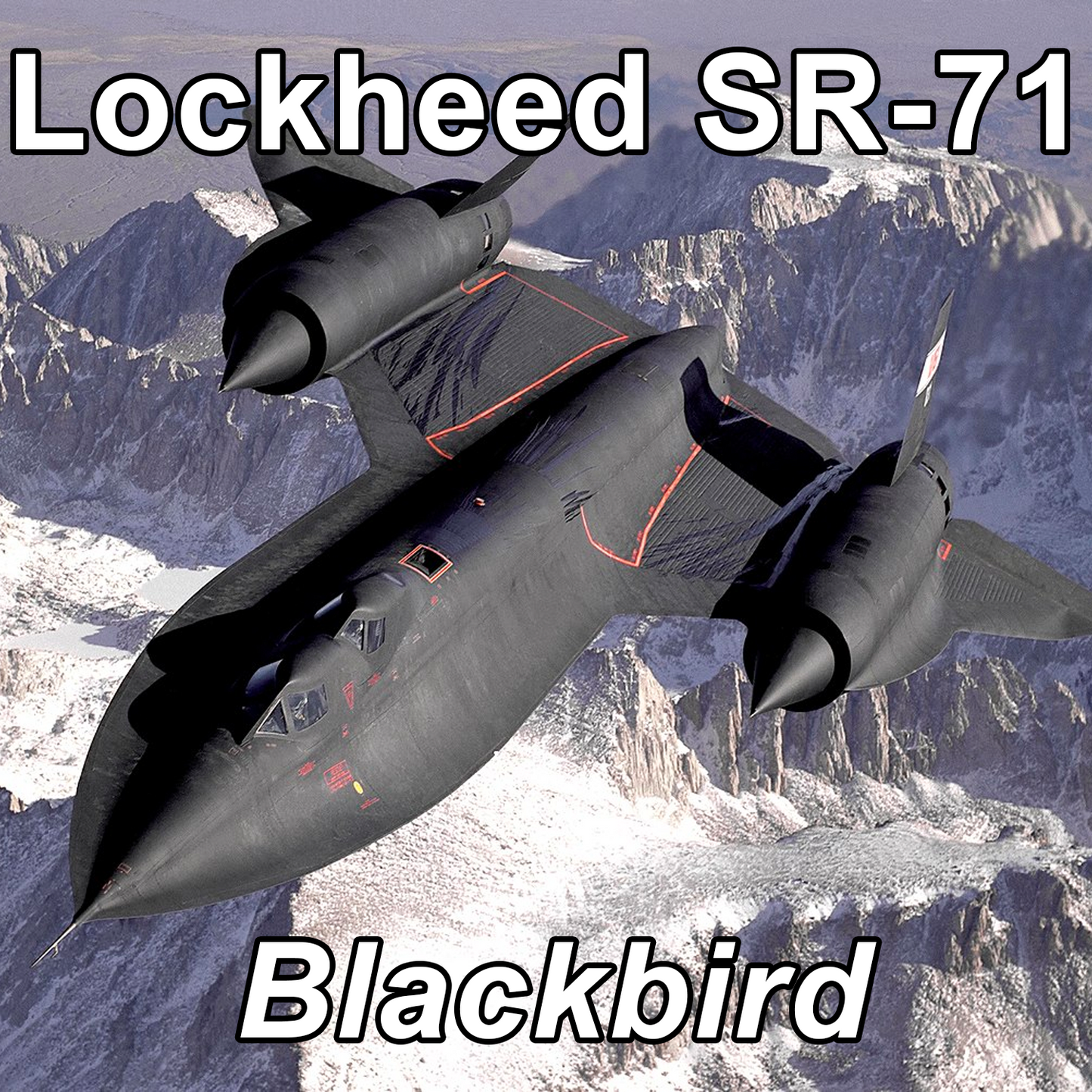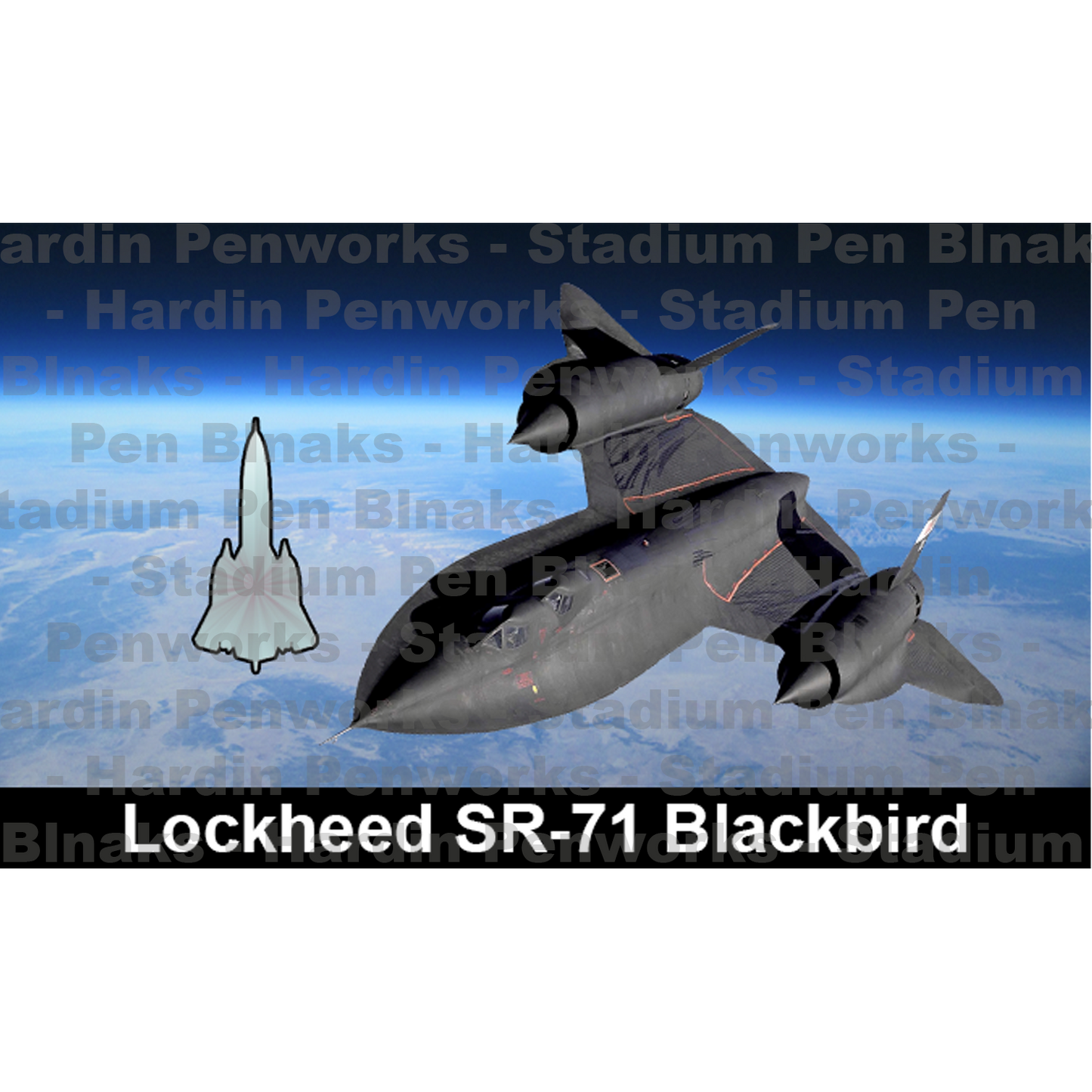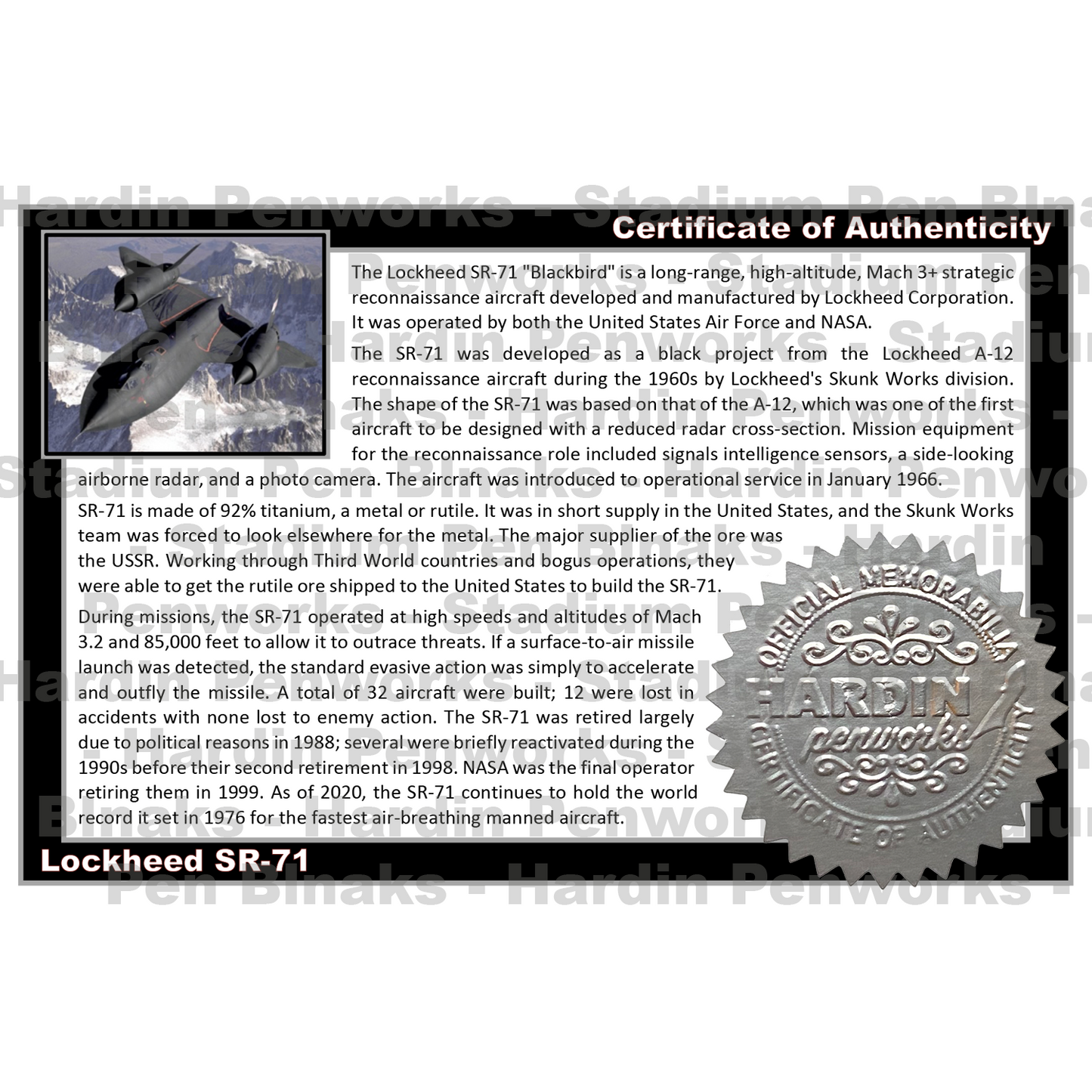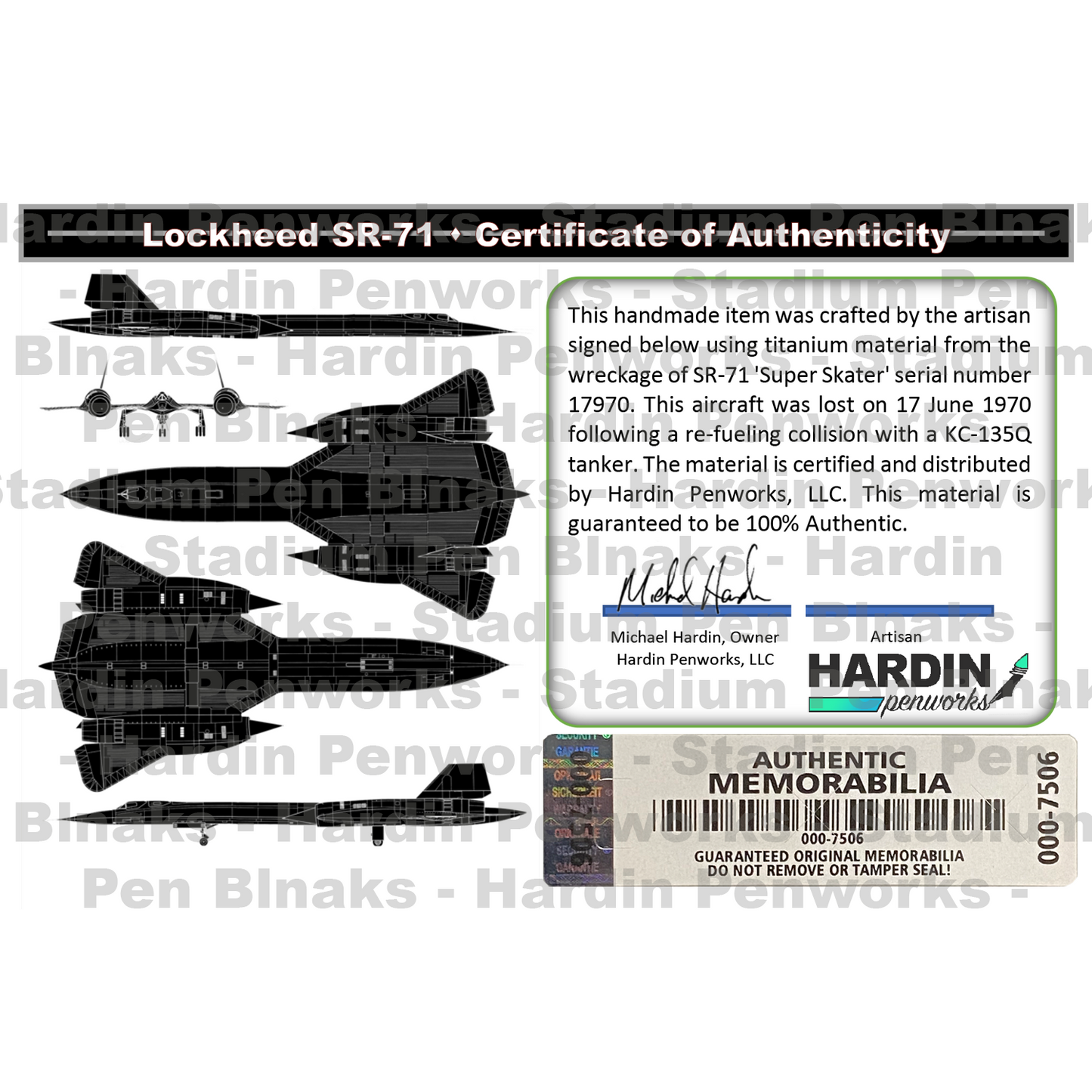Lockheed SR-71 Blackbird
Lockheed SR-71 Blackbird
5.0 / 5.0
(5) 5 total reviews
Prodcut Base price with no add-on options
12 in stock
Product Price with any add-on options selected
Couldn't load pickup availability
Sierra embedded blanks with Lockheed SR-71 Blackbird titanium material.
All blanks will come with one COA per blank.
COAs are 4" x 6" card stock with foil COA seal.
The Lockheed SR-71 "Blackbird" is a long-range, high-altitude, Mach 3+ strategic reconnaissance aircraft developed and manufactured by Lockheed Corporation. It was operated by both the United States Air Force and NASA.
The SR-71 was developed as a black project from the Lockheed A-12 reconnaissance aircraft during the 1960s by Lockheed's Skunk Works division. The shape of the SR-71 was based on that of the A-12, which was one of the first aircraft to be designed with a reduced radar cross-section. Mission equipment for the reconnaissance role included signals intelligence sensors, a side-looking airborne radar, and a photo camera. The aircraft was introduced to operational service in January 1966.
SR-71 is made of 92% titanium, a metal or rutile. It was in short supply in the United States, and the Skunk Works team was forced to look elsewhere for the metal. The major supplier of the ore was the USSR. Working through Third World countries and bogus operations, they were able to get the rutile ore shipped to the United States to build the SR-71.
During missions, the SR-71 operated at high speeds and altitudes of Mach 3.2 and 85,000 feet to allow it to outrace threats. If a surface-to-air missile launch was detected, the standard evasive action was simply to accelerate and outfly the missile. A total of 32 aircraft were built; 12 were lost in accidents with none lost to enemy action. The SR-71 was retired largely due to political reasons in 1988; several were briefly reactivated during the 1990s before their second retirement in 1998. NASA was the final operator retiring them in 1999. As of 2020, the SR-71 continues to hold the world record it set in 1976 for the fastest air-breathing manned aircraft.
These blanks are made with titanium material embeds from the wreckage of SR-71 'Super Skater' serial number 17970. This aircraft was lost on 17 June 1970 following a re-fueling collision with a KC-135Q tanker. The material is certified and distributed by Hardin Penworks, LLC. This material is guaranteed to be 100% Authentic.
Share




Blank was easy to turn and once finished was very clear. Looks great with a black finished bolt action.
I love having a piece of history from these pen blanks.
Amazing pen blank just like every other I’ve bought here.
Hugely recommended service, second to none
This pen blank looks nice and something the customer loves.





